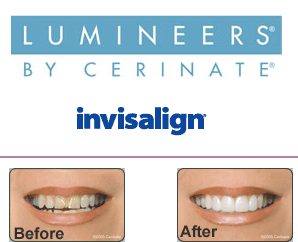 Immediate Smiles
Immediate Smiles
What is an immediate smile?
An immediate smile (denture) is a complete denture or partial denture inserted on the same day, immediately following the removal of natural teeth.
What are the advantages of an immediate smile?
There are several advantages of an immediate denture. The most important factor is that you will never need to appear in public without teeth. It is also easier to duplicate the shape, color and arrangement of your natural teeth while some are still present in your mouth. When an immediate denture is inserted at the time of extraction, it will act as a Band-Aid to protect the tissues and reduce bleeding. An immediate denture will allow you to establish your speech patterns early. You will not have to learn to speak without a denture in place and then later relearn to speak with a new denture. An immediate denture will also allow you to chew better than without any teeth and minimize facial distortion that may occur when teeth are removed.
Is an immediate denture for everyone?
Not everyone is a candidate for an immediate denture. Some people may be advised against this treatment, due to general health conditions, or because of specific oral problems.
How long does it take to complete?
Four to five visits may be necessary for the fabrication phase of an immediate denture, plus any preliminary surgery. For patients requiring a complete immediate denture, the back teeth are often extracted six to eight weeks prior to the fabrication phase. This allows the extraction sites to heal and a better-fitting immediate complete denture to be fabricated.
The fabrication phase consists of impressions, bite records, tooth selection and try-in of the back teeth. On the day of delivery, you will be seen in oral surgery for extraction of the appropriate teeth, followed immediately by the insertion of the immediate denture.
Dentures
 A denture or a complete denture as it is often called, is an appliance that is inserted in the mouth, replaces natural teeth and provides support for the cheeks and lips.
A denture or a complete denture as it is often called, is an appliance that is inserted in the mouth, replaces natural teeth and provides support for the cheeks and lips.
Most dentures are made of acrylic and can be fabricated different ways.
A conventional denture is made after all teeth have been extracted and the tissues (gums) have healed.
An immediate denture is fabricated and inserted immediately after the teeth are extracted and the tissues are allowed to heal under the denture.
An upper denture has acrylic, usually flesh colored, that covers the palate (roof of the mouth).
A lower denture is shaped like a horseshoe to leave room for the tongue.
The teeth are made of plastic, porcelain or a combination thereof. Dentures can be fabricated to fit over endodonticly treated teeth and a complete denture can be attached to dental implants to allow for a more secure fit of the appliance.
Dentures over a normal course of time will wear and need to be replaced or relined in order to keep the jaw alignment normal. The alignment will slowly change as the bone and gum ridges recede or shrink due to the extraction of the teeth. Regular dentist examinations are still important for the denture wearer so that the oral tissues can be checked for disease or change.




Follow Us!